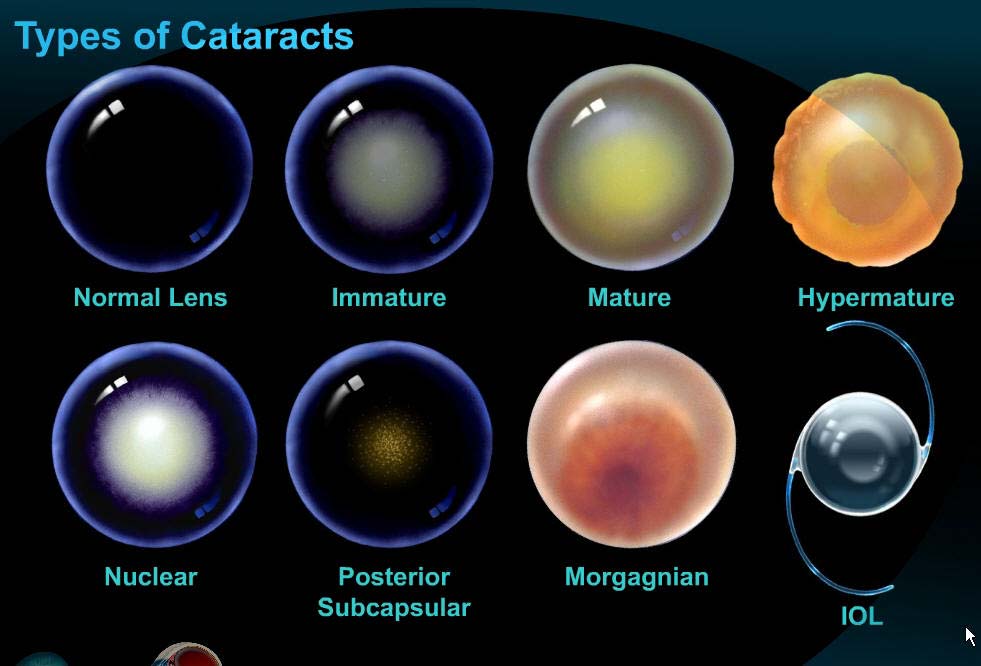Cataract- formation and classification
Cataract is the acquired or congenital opacification of the lens of the human eye. The lens is the refractive organ of the eye which plays major role in directing the upcoming light rays on the retina to form the real image.
Avascular nature of lens
The transparency of lens is very essential factor for the normal functioning of lens. The transparency of the lens is maintained by its physiological mechanisms and anatomical structures. The presence of epithelium of lens and arrangement of fibers and lens proteins along with all the active mechanisms help to keep it transparent. The avascular nature of lens also contributes in its transparency.
The cataract formation and classification is as following
Causes of development of cataract
They cataract develops in the eye as a result of physiological changes which occur with the age. It also occurs as a side effect of prolonged use of certain medications. Metabolic causes, drug induction and trauma can also cause the onset of cataract.
Cataract in different aged patients
On the basis of onset of cataract from by birth to the old age, following are the clinical types of cataract
- Congenital cataract
- Juvenile cataract
- Adult cataract
- Pre-senile and senile cataract
Type of the cataract
On the basis of the location of opacity following are the types of cataract
Capsular (anterior or posterior capsular cataract)
Polar cataract (anterior or posterior)
Nuclear (develops in the nuclear fibres of lens)
Lamellar (opacity of particular lamella of lens fiber)
Sutural cataract
Total cataract

Classification on the basis of opacity location
The most important parts of the lens of human eye are nucleus, cortex, capsule, sub-capsular part and poles (anterior and posterior) of the lens.
The cataracts are
- Capsular cataract
- Sub-capsular cataract
- Anterior and posterior polar cataract
- Nuclear cataract
Classification on the basis of the degree of cataract
- Immature cataract
- Mature cataract
- Hypermature cataract
- Morgagnian cataract
Immature cataract
In immature cataract the lens is partially opaque. the haziness or cloudiness of lens is visible.
Mature cataract
In mature cataract the entire lens part from cortex to nucleus is completely opaque.
Hypermature cataract
In Hypermature cataract, the lens proteins denature and disintegrate due to opacity of the lens. This phenomenon causes the capsule of lens become shrink and wrinkled.
Morgagnian cataract
After the Hypermature stage, the capsule breaks and the water enters the lens. The cortical fibers of the lens absorb water and the nucleus sinks to the bottom of this lens. The lens looks milky in its appearance and the nucleus of the lens can be seen sinking.
Can we reverse the cataract?
The formation of cataract is also an aging process. We can surely prevent the onset of cataract by knowing the following factors:
Having acquired precise knowledge
In case of any systemic disease people take medicines. One should always know the side effects of medicines. The prolong use of some medicines can cause cataract or glaucoma. Hence the ocular side effect of medicines play important role in the cataract development.
Making appointment
Once the patient becomes familiar with the ocular side effects of medicines and systemic diseases, he should take his appointments to the doctor for the initial screening of the eyes. If one is facing the problem of frequent blurredness then he should also go the the optometrist to discover the underlying cause.
- If the immature cataract a an early stage is diagnosed then it can be treated with the help of medications that can treat the opacity of the lens.
- Once the cataract becomes mature then the surgical extraction of cataractous lens is the most appropriate treatment
Founder of EyesMatterMost- an optometry student who loves talking about eyes. I tend to cover topics related to optometry, ophthalmology, eye health, eyecare, eye cosmetics and everything in between. This website is a medium to educate my readers everything related to eyes.




